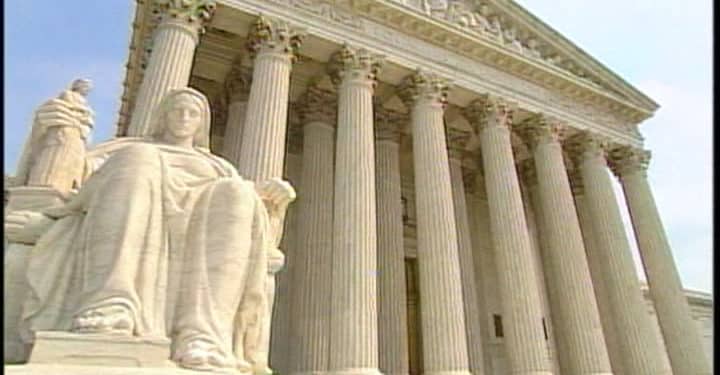The petitioner in the Escobar case is a hospital in Massachusetts that allegedly billed the government for doctor’s services when it knew doctors did not perform any services. To make matters worse, the relator’s family who filed the case alleged that their daughter died as a result of defendant’s failure to provide proper medical care to patients at the facility.
How the case is decided may very well limit or restrict the number of False Claims Act cases that can be filed. That is because the Court is being asked how specific government contracts must be to hold fraudsters accountable and what is the definition of false or fraudulent claims under the False Claims Act. In particular, this case could establish an entirely new standard for False Claims Act cases that are based on a company’s alleged violation of a statute or regulation and where no express certification of compliance is required to be cited when the company submits a claim for payment to the government.
A large number of pro-business groups trumpeted this case as a shining example of the plaintiffs False Claims Act bar having “run amok” to stretch the law beyond its purpose and to hold contractors liable for fraud when the only issue is a simple breach of contract or minor regulatory violation. They submitted multiple friend of the court briefs complaining that the First Circuit’s ruling in this case unfairly expands False Claims Act liability and would result in a “parade of horribles” harmful to business.
The National Whistleblower Center (NWC) filed an amicus brief supporting the whistleblower or relator in the case.
So let’s examine what the hospital (supported by 14 pro-business friend of the court briefs) actually argued.
It is shocking that anyone would actually ask to be excused from submitting bills to the government to pay for something that didn’t happen. But in this case the hospital wants to be paid for doctor’s services when it allegedly knew that doctors did not perform the services at issue. If that’s not fraud, then what is?
The hospital also argued that billing for a doctor when no doctor was involved is not really so bad because the theory of liability in this case was made up by the False Claims Act plaintiffs bar. The hospital and their supporters contend that while the hospital may have breached a contract or minor government regulation it is not serious enough to say it is fraud. This argument misses the point and distorts what is at issue in these kinds of cases. When a contractor submits a claim for payment to the government by implying that it complied with all material terms of a contract or regulation when it knows, in fact, it did not, that is defrauding the taxpayer.
Did the plaintiffs’ bar really make up this implied certification rule and “run amok” as the large corporate government contractors and medical providers would have us believe?
As it turns out, a similar type of fraud as alleged in the Escobar case was regularly committed during the Civil War when unscrupulous contractors sold bad goods to the Union Army. In response to that widespread government contracting fraud during the Civil War Congress enacted the False Claims Act in 1863.
Examples provided by Congress that led to passage of the False Claims Act were selling to the Army guns that didn’t shoot; horses and mules that were dead, blind or couldn’t walk; food that was rancid; boots that fell apart.
From the outset of the Civil War, stories of dishonest contractors taking advantage of the government’s immense need for supplies and armaments began to emerge. According to Abraham Lincoln’s biographer Carl Sandburg, as early as the First Battle of Bull Run, reports trickled in from the front lines of soldiers armed with “muskets not worth shooting” sold to the government by “swindling contractors.” Further complaints of shoddily made goods soon surfaced, making it abundantly clear that the War effort was being hampered by the government’s inability to procure the quality and quantity of supplies necessary to fight the War. Other chroniclers of the war effort, such as in the memoirs of Regís de Trobriand who rose to the rank of Army General, documented that Union troops were marching on shoes made from inferior leather that lasted only twenty to thirty days before falling apart, and sleeping underneath blankets made from light, flimsy fabric that failed to protect them from the elements.
These and additional details on this history behind the False Claims Act are contained in the NWC’s amicus brief filed in the Escobar case, which cites to the original history and the actual bills and payment receipts that were relied on by Congress as examples that led to passage of the False Claims Act.
When the hospital’s attorney in Escobar tried to make the argument that this is just a “contract breach” and it’s “not fraud”, Justice Sonia Sotomayor didn’t buy it. As the transcript of the oral argument reveals, Justice Sotomayor understood the history of the False Claims Act and why it is important to hold government contractors liable for committing this kind of fraud.
JUSTICE SOTOMAYOR: So providing a gun that doesn’t shoot to the Army is simply a contract breach?
ENGLERT: I don’t know, Justice Sotomayor. It depends on the facts of the case.
JUSTICE SOTOMAYOR: What – what more facts do you need? Government contracted for guns. All of sudden you deliver guns that don’t shoot. That – those are the facts that led to this Act.
At one point, Justice Sotomayor asked the hospital’s attorney, “Do you think that anybody, except yourself, would ever think that it wasn’t a fraud to provide guns that don’t shoot if that’s what the government contracted for?”
Justice Elena Kagan didn’t buy the hospital’s arguments either. Her questioning of the hospital’s attorney expressed disbelief that the hospital was claiming it did not submit a false claim because it didn’t say it had complied with the law when it submitted the bill for doctor’s services.
JUSTICE KAGAN: If I understand what you’re saying … In demanding payment for satisfaction of the contract, you are not making a recommendation that you have satisfied that you have satisfied the contract?
ENGLERT: Not that broadly. Not – not every jot and tittle of the contract. And there’s a policy reason why that’s a good rule –
JUSTICE KAGAN: I’m not into every jot and tittle. I’m into material portions of the contact. That – you know, that the guns shoot, that the boots can be worn, that the food can be eaten – … and a doctor’s care is a doctor’s care.
Under the wording of the False Claims Act itself an implied violation can arise without any reference to a specific regulation that expressly requires guns to shoot or doctors to provide services. For example, there need not be a specific regulation stating that only licensed doctors must perform the services that are billed in order to impose liability because the claim itself is impliedly and legally false based on the facts presented. The hospital’s claim for payment should be determined to be legally false if the hospital submitted a claim under a billing code that allows the hospital to bill the government for a doctor’s services and the hospital knew that it did not provide those services from a doctor. Nonetheless, in this case, there is a regulation directly on point that required doctors to perform the services at issue.
To make matters worse, one of the hospital’s arguments to the Supreme Court was that government contractors should be allowed to “pick and choose which regulations they comply with.” Seriously, that is a direct quote.
Well, why is that? According to the hospital “there’s so many and confusing” regulations.
And while the hospital shamefully argued it could “pick and choose” what regulations to obey it had the nerve to argue that this case is a “plaintiff’s lawyer’s game.”
Based on the questioning at oral argument there does not appear to be a majority of Justices ready to strike down the False Claims Act’s implied certification theory of legal falsity as not viable. Rather, the Justices seemed to be searching for a rule to define when an implied certification claim of legal falsity can be made. Exactly what that rule might say, or whether a majority of the current Court can reach agreement on such a rule, remains to be seen.


